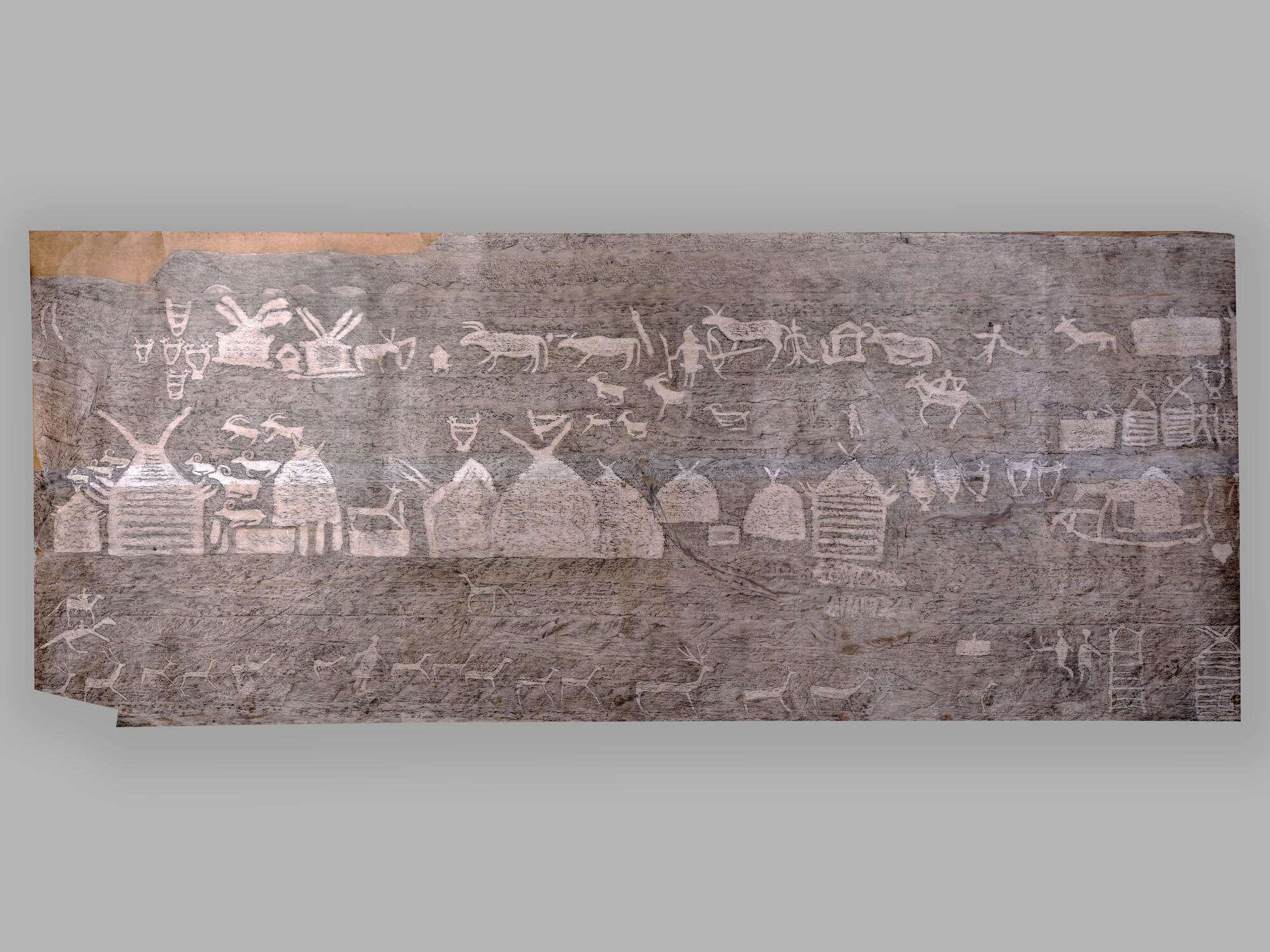There is a small mountain range Boyary, which stretches along the Yenisey River, six kilometers from the village of Troitskoye in the Republic of Khakassia. It has rocky outcrops covered with unique petroglyphs. The word “petroglyph” literally translates from Greek as “carved in stone”. Rock art is also called pisanitsa.
Boyarskaya Pisanitsa was discovered in 1904 by the Siberian scientist Alexander Adrianov. Half a century later, his research was continued by students of the Moscow Higher Art and Industry School. In different years Boyarskaya Pisanitsa was explored by dozens of leading Soviet historians and archaeologists.
The museum presents a documental reconstruction of petroglyphs made in the 7th — 2nd centuries BC. During the Early Iron Age, the Tagar culture flourished in the Minusinsk Hollow. The main occupation of the Tagar people was cattle breeding, so their petroglyphs often depict cattle. Animal figures are shown in profile, they are dynamic, full of expression, accurate in details. People, on the contrary, are depicted conventionally, laconically, almost schematically.
The petroglyphic drawings were carved using pecking technique: the ancient artist struck numerous straight or slightly slanted blows on the butt of a sharp metal tool. As a result of thousands of blows contour and silhouetted images with scratched rough surface areas were created. Most of the drawings of Boyarskaya Pisanitsa are made in silhouette, details are worked out inside the drawings of houses and cauldrons.
The Tagar petroglyphs are not isolated from each other, but form coherent stories and compositions. They show a settlement of ancient inhabitants of the Middle Yenisey, their dwellings, livestock, household utensils, weapons, as well as the artists themselves. The fragment on display features three men riding horses and one on a reindeer. They are guiding the reindeer herd to the log houses. Large log houses with sloping roofs and conical buildings resembling yurts are in the center. There are animals near the dwellings: rams with powerful steep horns and short tails, goats with beards and horns bent backwards.
On the left, a man in an unusual headdress is driving cattle to the houses. Above there are more houses, cauldrons, rams, horses, one of which is saddled. The rider holds a halter in one hand and probably a lash in the other. Nearby is a man in a pointed headdress with a drawn bow in one hand and, presumably, a staff in the other, with a dog at his feet.

